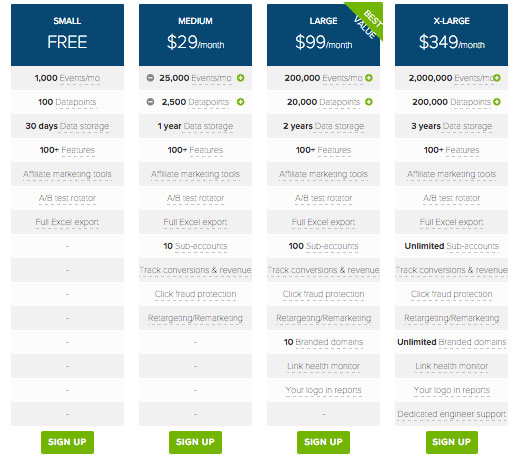Success breeds competition. Competition breeds change. How do you combat the inevitable shift in consumer behaviour that will (one day) impact upon your marketplace?
McDonalds are experiencing the market squeeze. A new burger is in town. The gourmet burger providers (Five Guys, Shake Shack etc) are persuading consumers to rethink their expectations in the burger department.
Now, it’s not just about convenience. Quality is the new name of the game.
What do McDonalds do?
They’re the big player in a huge market. You know that. It’s a $73bn market in the US alone. Last year, it was reported that McDonalds own 34% of the burger market. Twice the size of their nearest competitor, Burger King.
But, like any market, over time, as demand increases and competition grows, markets will segment. Al Ries & Jack Trout (in The 22 Immutable Laws of Marketing) refer to the shift as The Law of Division.
The way for the leader to maintain its dominance is to address each emerging category with a different brand name
Will we see a new McDonalds brand to embrace consumer demand? Is the gourmet burger a product McDonalds can integrate into their existing menu?
McDonalds’ options
Do they follow the mantra of ‘doing one thing well’? Where they continue to cater for their traditional audience and push the message (through the gargantuan advertising budget they have at their disposal) of convenience and price over quality?
Or ‘if you can’t beat them, join them’? Do they add gourmet burgers to their menu?
If they do, what will the reaction be of their loyal customers and those on the fence?
Will the current ‘fast food’ message be contradicted with a made to order premium burger that you actually have to wait for?
Is this space one step beyond where McDonalds are firmly routed?
Will it be seen as a reactionary approach to the outside threat of a new marketplace by business commentators?
Test, Listen & Learn
This is what McDonalds are doing.
They test. Specifically, McDonalds test in 28 restaurants in the UK.
The test will tell McDonalds all they need to know as they consider whether to roll out nationally (and then internationally).
Remember. This is McDonalds. I don’t need to tell you anything about what McDonalds stands for or the size of the business.
If McDonalds can test ideas to combat shifts in the marketplace, can you?
Success and results come through the willingness to test (and act upon) new ideas.
It’s far far easier to test new ideas to branch into new markets online. You just figure out what your customer wants and how they want it. How? You listen. You have your ear well and truly to the ground.
- Are consumers shopping elsewhere for a premium version of your service?
- Are competing retailers managing to sell the same products you stock, but at a greater margin?
- Is there a new kid in town offering a similar service to you at a fraction of the price?
Know your audience
What changes are occurring within your market that are causing a shift in your consumer’s expectations?
You’ve got the infrastructure to test new products. It’s called your website.
Present your own product (your hamburger equivalent) with new fillings.
Receptive audience? You can now roll out your own gourmet burger. The premium product with the higher ticket price.
Are people willing to pay twice as much for a premium version of your product or service? 5 Guys seem to be doing okay as they expand from 5 outlets to over 1,000 in just 13 years. Burgers at twice the cost of McDonalds. People, in any market, realise the value of premium quality. Even if it’s just a burger (where we all know in the back of our mind the cost of a McDonalds burger).
I’m thinking there’s a majority of your competitors who are considering ways to bring their prices down to compete. Maybe they’re too busy focusing upon box-shifting to be aware of shifts in the market. This can relate to B2B as well as retail. Sometimes we get to bogged down with the process of work to consider the influence of market conditions.
There will always be room in the burger market for McDonalds. People will always take preference to price or convenience over quality.
We’ve seen it time and time again. The airline market. The automobile market. The supermarkets. Established businesses feeling the threat of market shifts readied to extend their range to cater for new demand.
Sometimes we can’t help but want more than the fair share of the pie. Especially as that pie gets cut into smaller and smaller pieces. Or, as in the case of the gourmet burger market, a new pie is placed on the table.
Your task is to consider how to deliver premium and (justifiably) raise your prices.
Think like a software company
We’ve grown accustomed to choice.
- Big portion? Smaller portion?
- Gold, Silver or Bronze package?
- First class or cattle?
Software businesses know that the ‘one size fits all’ price model is difficult to employ. That’s why the feature-comparison table (just like ClickMeter’s below) helps consumers choose the most appropriate package
Isn’t this what McDonalds are now looking to offer with their own gourmet burger? More features delivering more benefit?
We need to consider how our own products or services can be broken down into light versions, or upgraded to premium versions.
What would your own minimum viable product look like? Similarly, is there a maximum viable product you can offer?
Let’s not forget the fries. We know McDonalds’ profit greatly from the side order of fries and the Coke compared to the burger itself.
Is McDonalds’ move into the gourmet burger market all about profit? I doubt it. They want their place at the table.
Can you follow the move McDonalds have made?
If you’re feeling concerned about consumer shifts within your own market are you simply sitting their waiting to see what happens? I sure hope not.
We talked earlier about the testing infrastructure you already have at your disposal. Your website.
Just because you don’t offer a particular product doesn’t mean you can’t talk (or write) about it.
This is a momentous task of your content creation. To bring products within separate divisions of your market into context of what you offer.
If you’ve made the decision to stay premium with your business offering write about the thought process behind that. Justify your decision and see whether your consumers can be persuaded by your thinking.
Seriously.
If there’s an accountant up the road that are using some software package you feel is inadequate? Let your people know.
If there’s a product you don’t stock because you feel it doesn’t offer the benefits it should? Let your people know.
If you’ve made the decision to progress your software with a feature you feel doesn’t really help your user? Let your people know.
The worse thing you can do right now is ignore what’s really going on in your market. My mum always taught me that talking about things makes it easier. It’s the same for writing.
Here’s why.
The more your approach to blogging, or landing page creation, includes discussion points regarding what’s going on in your market (not what’s going on within your business) your opportunity to attract search traffic will increase considerably.
The key is to bring those discussions into the context of your own offering.
Many businesses fail with that key element. Context.
You’re seeking an audience (potential customers) who are beyond your current content signal. People searching for products you don’t stock, or features you don’t yet offer.
The content you create is your opportunity to address those needs and deliver your valuable insight and opinion.
You have the opportunity to shift perception. To change the way people view things.
That’s a pretty valuable weapon to have, isn’t it?
The Modular Business Model
We’re taught to think niche. To either create our own division of a larger market place (i.e. the gourmet burger) or to choose a particular segment of our marketplace. To be a big fish in a small pond.
Consider the opportunity your website provides you.
You could be something to somebody. You could be everything to everybody.
Or, you could be whatever your prospect wants you to be.
That’s the essence of the Modular Business Model. At your core is the base proposition. You sell food. Just like your local restaurant, you can theme your menu as you wish. To meet trends. To create demand. To suffice existing needs.
Modular Business in the offline environment
Here’s a great example in the offline world. Story. A retail store in Manhattan that takes the ‘point of view of a magazine. Changes like a gallery. Sells things like a store.’ A success? Take a look at their press page.
Set in a 2000 square foot store located in Manhattan’s 10th Ave. retail corridor, STORY is a retail concept that takes the point of view of a magazine, changes like a gallery and sells things like a store. That means every four to eight weeks, STORY completely reinvents itself -from the design to the merchandise – with the goal of bringing to light a new theme, trend or issue.
Think like Story. You have the opportunity to theme your digital business. Gone are the days of adhering to the Yellow Pages category that you became accustomed to wearing as your business label.
People are finding out about your business based upon their own individual needs. Serve those needs. Think like a magazine publisher. Spot trends. Spot opportunities. Go modular.
Creating pockets of themed content around a particular topic allows you to reframe your business to the need of your individual consumer. It won’t impact upon your core business proposition. It will allow you to test market response.
Building your modular content process
Step One: Consider creating a piece of super content each quarter. Something above beyond what anybody else in your industry offers. Something that focuses on a particular message/theme you want to amplify. Talk about innovation in your industry. Talk about process. A guide. An eBook. Something of value in exchange for your reader’s email address.
Step Two: Create a series of blog articles discussing the area you wish to explore (presenting the gourmet burger) delivering your own unique perspective (the pros and cons)
Step Three: Create your hook. Bring that piece of content into the context of the topics you discuss in your ‘super content’ piece.
Step Four: Now offer your gated content – that valuable piece of super content. Use an email service such as Drip allowing you to successfully tag and segment new email recipients.
Step Five: create an email-drip campaign over a series of personalised emails that reemphasise the points you make in your downloadable book.
You can offer the gourmet burger and still serve fries…
Don’t offer the gourmet burger? talk about the gourmet burger
The modular content model will allow you to test the waters in a variety of market categories without losing focus on your core proposition.
You have the data available to you to record success.
- Through Google’s Webmaster Tools you can note the impressions around keywords you’re focusing your content upon. You can also view trends in demand (search volume).
- Through Google Analytics you can measure conversion rate of gated downloads.
- Through Drip (or a similar email service) you can measure open rates and click thru.
- Through revenue and enquiries you can report upon business success.
Test, Listen or Learn, just don’t sit back and ignore
Through your website you have the opportunity to test, listen and learn. It doesn’t take much time. It just requires an action plan. A process as well as a presence.
The point is this. Don’t just sit back. Do something. Test something. Then monitor for response. Adapt accordingly. Evolve accordingly.
The opportunity to test ideas and receive valuable feedback from your audience and your consumer is one of the major reasons why smart marketers advocate authenticity. If you’re open and out there (i.e. creating valuable content for your audience) you put your business in a position to request opinion (and to receive an honest response).
The days of being able to shut the blinds and ignore what’s going on in your market and your surrounding markets are long long gone.
Ignorance is no longer bliss, it’s a poison. Ask Blockbusters (if they were still around).
Technology doesn’t disrupt markets. Consumer behaviour does.
Similarly, the division of the marketplace is only successful when consumers embrace a new innovator or disruptor. The likes of Five Guys have disrupted the burger market. As most (Burger King, Wendys, Hardees, McDonalds) were busy grabbing market share of the existing burger market, Five Guys threw a premium product into the mix. They created a new market.
Ask yourself, who has the gourmet burger on the menu in your market right now? What are you going to do about it?
We also cover this topic in the latest Marketing Homebrew podcast



